|
 |
|
 |
|
 |
 |
| |
16:9 in English: Names and Naming in John Ford
By CHARLES BARR
In 2010 I was one of 38 contributors to Film Moments, a collection of short essays doing what the title suggests: picking a film, and a brief intense passage from it, that seemed to exemplify something important about the medium (Brown & Walters 2011). It was a surprise to find, when the book was published, firstly that only two contributors chose a moment from a non-dialogue film – Thomas Elsaesser on Siegfried, and me on City Lights – and, secondly, that none of the essays on dialogue films actually had much to say on dialogue as such, as opposed to (from some writers) other soundtrack elements, as well as visuals.
There is an expanding critical literature on film sound, and on film dialogue; but there is a vastly expanding literature (online and in print) on most aspects of cinema – who can begin to keep up with it all? My sense is that work on dialogue by scholars like Sarah Kozloff has so far had a limited influence within the field, as the Film Moments book seems to confirm. Attention to directors like John Ford, in whose films dialogue has commonly been seen as of only marginal importance, could help to rectify the imbalance.
If I could go back for a second choice of a Film Moment, I would choose a scene, and a brief exchange of words, from close to the end of Ford’s Stagecoach (1939). |
|
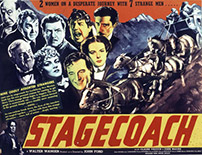
Fig. 1: Stagecoach (1939). |
|
| |
Lucy and Dallas
The stagecoach has arrived at Lordsburg, after a two-day journey from Tonto and two major crises: the premature birth of a baby to Lucy Mallory, an army wife travelling from the East to join her husband, and a subsequent attack by Apache, in which one passenger dies. Lucy, still weak, is laid on a stretcher, and a uniformed nurse comes forward with the line ‘I’ll take the baby’ – taking it from the arms of the one other female passenger, who has acted as midwife and protector.
Lucy now calls out to this woman from screen left: ‘Dallas’ (fig. 2).
Cut to Dallas, then to Lucy, meeting Dallas’ eyeline. Lucy continues: ‘If there’s ever anything I can do for...’. She breaks off and looks down (fig. 3). Cut to Dallas: ‘I know’ (fig. 4). Back to Lucy, who resumes eye contact: the angles are clear (fig. 5). Dallas spreads her coat over Lucy, who is then carried off.
There are two big scenes still to come – the shoot-out between the Ringo Kid and the Plummer brothers, and the decision of the Marshal to allow Ringo, an escaped prisoner, to ride off with Dallas across the border to Mexico and freedom – but Lucy’s farewell to Dallas is a dramatic climax that is in its way just as strong.
Why is it so momentous, such a great ‘film moment’? Lucy has crossed a formidable class barrier by meeting the gaze of the social outcast, and above all by naming her.
Dallas is a prostitute, driven out of Tonto by the woman-led Law and Order League. When Dallas first takes her seat in the stagecoach, Lucy’s lady friends are horrified: you can’t travel with ‘that creature’. Lucy defies them because she is so determined to join her husband; during the journey, she keeps her distance fastidiously. When on day one they stop for food at Dry Fork, the southern gentleman, Hatfield, invites her to move away with him from a place opposite Dallas to the furthest end of the table, and she at once does so, along with Gatewood the banker (1). These are the three passengers among the seven who have social pride and pretensions; they cannot notice that creature, let alone name her. Even when Dallas helps to deliver and then care for the baby, it takes time for Lucy to soften, and the other two will never do so. At Lordsburg, the women return from the bubble of the journey into their different worlds. The respectable ladies who receive Lucy and watch the transfer of the baby clearly recall, in dress and manner, those of Tonto, glancing fleetingly at the other woman as at a creature unworthy of respect (fig. 6). This makes Lucy’s address to ‘Dallas’ all the more brave and moving.
Nurse: ’I’ll take the baby’
Lucy: ’Dallas – if there’s ever anything I can do for….’
Dallas: ’I know.’
Dallas could have been given a speech of several lines to explain what she knows. I know that you are sincere, and I honour you for it. But I know why you cannot complete the sentence and why you look away. I know that we belong to worlds so far apart that you could never bridge the gap and do anything for me, and I know that you know this.
All of this is implicit in Claire Trevor’s look, and diction, and in the tender way she takes off her cloak and lays it over Lucy.
The scene is wonderfully typical of Ford. He is commonly labelled as a ‘visual’ director who was careless about dialogue, even disdainful. Repeated stories, attached to different films, have him ripping out pages of dialogue from a script, either to satisfy producers who are worried about keeping to schedule, or just to avoid getting bogged down in talk (2). Often, he abetted this labelling: ‘The only thing I had was an eye for composition – I don’t know where I got it – and that’s all I did have.’ (Bogdanovich 1967, pp. 10-11). And yet some of the most memorable lines in movies come from his work. ‘They’re saved from the blessings of civilisation’ (the final scene of Stagecoach). ‘That’ll be the day’. ‘Let’s go home, Debbie’ (The Searchers). ‘Impetuous - Homeric’ (The Quiet Man). ‘When the legend becomes fact, print the legend’ (The Man Who Shot Liberty Valance).
He was not so much careless about words as concerned that they should be trimmed down, and earn their place. The page-ripping stories are offset by testimony about the care he would take in going over scripts with his writers, or without them. According to a press feature in 1937, just before Stagecoach and its immediate successors enhanced his status in the industry in spectacular fashion, ‘frequently he revises scripts for his pictures and he tries to colloquialise his lines whenever he can’; the second verb here is a revealing one (from an Associated Press feature of 1937, quoted in Ford 1979, p.104). Right to the end of his career he was doing this, as Peter Bogdanovich witnessed on location for Cheyenne Autumn (1964). He breathlessly recounts how Ford improvises dialogue – ‘the script supervisor was taking it down as fast as he could’. Richard Widmark’s cavalry officer (fig. 7) has to give orders to a trooper, played by Harry Carey jr., and to address him as Jones, repeatedly, without response, until Carey corrects him: ‘Name’s Smith, sir’. The actors can’t at first get this new dialogue right, and Ford has to keep retaking the scene, but he doesn’t give up, because this is exactly the sort of nuance of dialogue that matters to him (Bogdanovich 1967, p. 108). Names, and acts of naming, are a central thread in his work. He is the master not just of the Western, but of the vocative case.
Widmark’s misnaming is a minor instance of the crude insensitivity shown by Colonel Thursday (Henry Fonda) in Fort Apache, where his arrogance leads him to address Lieutenant O’Rourke (John Agar) – newly appointed to his command, and destined to become his son-in-law – as O’Brien and then as Murphy, as if all Irish are the same. This is just one element in an intricate network of naming that is traceable through that film and through Ford’s work as a whole – the Westerns especially, though not exclusively. I have done some tentative tracing elsewhere, but in the limits of this essay I shall simply trace a new thread through Stagecoach, one that culminates in Lucy’s naming of Dallas (see Barr 2007).
‘That's what I'm called’
The stagecoach carries nine people. The driver is Buck; the Marshal, riding shotgun, is Curly; they remain relatively flat characters, and their names are fixed and functional. The names of all the others are foregrounded in different ways.
The seven passengers comprise two outcasts, Dallas and the Ringo Kid; three with social pretensions, the army wife, the banker, the Southern gentleman; and two men in the middle, as it were, who complement each other – the respectably abstemious whisky salesman, Peacock, and the unabstemious Doc Boone. |
|

Fig. 2: Lucy calls out to Dallas from the stretcher at the left edge of the frame.
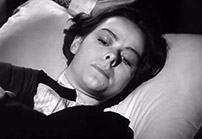
Fig. 3: Lucy: ’If there’s ever anything I can do for...’. She looks down.
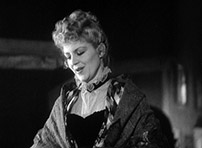
Fig. 4: Dallas: ’I know.’
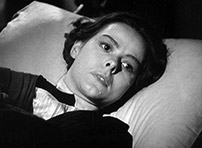
Fig. 5: Lucy resumes eye contact.
(1) The visual organisation of this scene is subject of a much-anthologised article by Nick Browne (1975-6). I offer a footnote to it, in discussing the silent role of the director’s brother, Francis Ford, observer of the character’s movements from alongside Doc Boone at the bar (Barr 2009). Even without the dialogue, the scene is thus remarkably rich. It is this combination of visual and verbal expressiveness that defines Ford’s art.
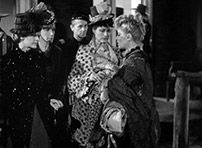
Fig. 6: The respectable ladies glance at Dallas in Lordsburg.
(2). See, among many examples of the page-ripping story, Joseph McBride (2001, p. 250); the film in question there is Wee Willie Winkie (1937).

Fig. 7: Richard Widmark as Captain Thomas Archer in Cheyenne Autumn (1964). |
|
| |
Boone is a qualified doctor whose drinking leaves him unable to sustain his professional work or to pay his rent – hence his expulsion from Tonto, alongside Dallas. But he has a proud sense of himself as ‘Doctor Josiah Boone’, and rises to the occasion when he is called on to deliver the baby. After he does so, Peacock leads the way in welcoming him ceremoniously to the bar as ‘Doctor Boone’ – a pattern exactly repeated in My Darling Clementine (1946) when Doc Holliday (Victor Mature) draws upon his former professional skills to operate on Chihuahua (Linda Darnell), and is thereupon twice saluted as Doctor Holliday (fig. 8).
Peacock himself is a worthy but grey figure, subject of a running joke about his name, which no-one can recall, unsurprisingly since it is so inappropriate – he is variously addressed as Hancock and Haycock and Reverend, or not named at all. Shortly after the farewell to Lucy, Dallas says goodbye as well to ‘Mister, er… and he resignedly supplies the surname she is looking for. But he, to his credit, has just, for the first time, addressed her as ‘Miss Dallas’’, with a warmth comparable to Lucy’s.
Lucy’s status has been set up with beautiful economy at the start, through dress, deportment and dialogue. As she alights in Tonto at the end of the previous stage, Buck invites her to ‘stretch your legs, I mean your limbs, ma’am’ – a nuance of genteel naming that will be echoed at the end of The Man who Shot Liberty Valance when the train conductor instantly adjusts the word spittoon to cuspidor, out of deference to Hallie, now a senator’s wife. Answering, she brusquely calls him ‘driver’. At once, she meets an army wife and an army officer: to her she is ‘Lucy Mallory’, then ‘Lucy’, while to him she is, correctly, ‘Mrs. Mallory’, the only name by which she will be addressed after the stagecoach moves on from Tonto – with one exception. The woman in charge at Dry Fork, answering her anxious enquiry about Captain Mallory, calls her ‘dearie’, and makes no distinction between her and Dallas: ‘Now you girls, set yourselves down and I'll get you something to eat.’ Likewise, to Ringo and to Buck they are both ‘ladies’. It is this democratic bracketing that Hatfield is at once concerned to break up, as with Gatewood he leads Mrs. Mallory to the far corner of the room.
Both she and Hatfield are preoccupied with issues of rank and title. He joins the stagecoach at the last minute in order to offer protection to one he refers to as ‘a gentlewoman, a great lady’, and he will echo this several times. At lunch, he explains his gallant attentiveness: ‘In the world I live in one doesn’t often meet a lady, Mrs. Mallory’. She in turn has immediately been struck, in Tonto, by his courtly demeanour, asking her companions ‘Who is that gentleman?’, and getting the reply ‘Hardly a gentleman, Mrs. Mallory… He’s a notorious gambler’ (fig. 9); we later hear of his shooting a man in the back. His problematic status is focused very precisely through naming. She feels she has seen him before:
Mrs. Mallory: ‘Have you ever been in Virginia?’
Hatfield: ‘I was in your father’s regiment.’
Mrs. Mallory: ‘I should remember your name. You're Mr. Hatfield?’
Hatfield: ‘That's what I'm called, yes.’ (fig. 10)
The first four of these last five words seem oddly redundant: Why does he not just say ‘Yes’? It is another characteristic Ford foregrounding of the process of naming, and it does turn out to have a point and a payoff. When, back on the journey, he gives water to Lucy in a silver goblet (naturally offering none to Dallas), she notices that it comes from Greenfield Manor. Hatfield, Greenfield: a third name is offered after he is hit by an Apache arrow. His dying words to Lucy are these: ‘If you see Judge Ringfield, tell him his s…’ (fig. 11-12). Like Lucy’s later offer to Dallas, the line breaks off, but we are surely to take this as the authentic family name.
Some versions of the script record the name here as ‘Greenfield’, but Ringfield is what he says. Three names are more telling than two in hinting at his unstable history, and the name ‘Ringfield’ has an extra neatness. The shot of the dying man, flanked by Doc and Lucy, is bracketed by shots of Ringo looking in at them, his heroic status in leading the defence against the Apache being underscored by the triumphant bugles of the cavalry sounding behind him. Ring-field and Ring-o: the flawed gentleman and the natural gentleman. Compare and contrast, likewise, Ringo, the ‘notorious’ outlaw (Gatewood’s word for him), and Gatewood himself, the only pure villain of the group, the true criminal beneath his blusteringly pretentious front, running off with his own bank’s money. These two are, likewise, linked verbally, this time by a first name, Henry, dwelt upon in each case carefully in early dialogue, and alluded to by Gatewood in Lordsburg, where he thinks himself safe, not realising that word of his crime will already have come through. ‘What’s your name, mister?’ ‘My name is Gatewood: Ellsworth H.Gatewood.’ The proud self-naming dooms him: bad Henry is led off to jail, while good Henry, who has broken out of jail, will soon ride off to freedom and happiness – with Dallas (fig. 13).
Both the words spoken by Doc Boone – ‘ they’re saved from the blessings of civilisation’ – and the farewell exchange of words that came earlier, between Dallas and Lucy, contribute to the perfection of this ending. |
|
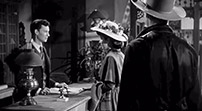
Fig. 8. Chihuahua, a saloon girl, is given, like Dallas, only the one name. Like Dallas, she is set against a refined woman from the East: Clementine Carter (Cathy Downs), who has travelled West to try to reclaim Doc. ‘I’m looking for Doctor John Holliday’ (see fig.) – ‘Oh, you mean Doc Holliday’. She uses the vocative as a purposeful weapon, calling him ‘John’ ten times during their first awkward scenes of reunion. Later, she acts as a nurse during the operation on Chihuahua, but it would be unthinkable for her to name her.
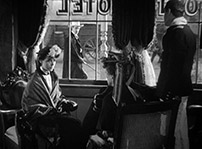
Fig. 9: ’Who is that gentleman?’
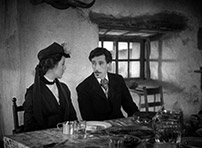
Fig. 10: Hatfield’s name turns out not to be a given.
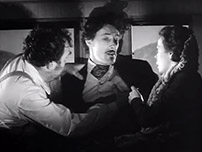
Fig. 11: [Hat]field: ‘If you see Judge Ringfield, tell him his s…’.
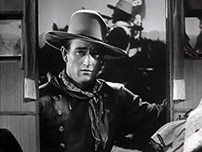
Fig. 12: Ringo (John Wayne) looks on as [Ring]field dies.
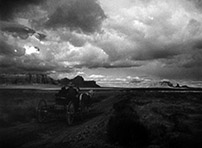
Fig. 13: Good Henry rides off with Dallas ’saved from the blessings of civilization’. |
|
 |
 |
 |
 |
 |
|
 |
 |
 |
| |
Facts
Bibliography
Barr, Charles (2007). ‘Sean Feeney to John Ford: a New Angle on his Authorship’, in Martin McLoone and Kevin Rockett (eds.), Irish Films, Global Cinema. Dublin: Four Courts Press, pp. 27-38.
Barr, Charles (2009). ‘Irish Brother Feeney: Francis Ford in John Ford’s Films, in Ruth Barton (ed.), Screening Irish-America. Dublin: Irish Academic Press, pp. 91-112. Also on Senses of Cinema website.
Bogdanovich, Peter (1967). John Ford. London: Movie Paperbacks.
Brown, Tom and Walters, James (eds.) (2010). Film Moments. London: Palgrave Macmillan.
Browne, Nick (1975-6). ‘The Spectator-in-the-Text: the Rhetoric of Stagecoach’, in Film Quarterly vol. 29 no. 2 (1975-6), reprinted in, for instance, Marshall Cohen and Leo Braudy (eds.), Film Theory and Criticism, 6th edition. New York: OUP, 2004.
Ford, Dan (1979). Pappy: the Life of John Ford. New Jersey: Prentice-Hall.
Jaeckle, Jeff (ed.) (2013). Film Dialogue. New York: University of Columbia Press.
Kozloff, Sarah (2000). Understanding Film Dialogue. University of California Press.
McBride, Joseph (2001). Searching for John Ford. New York: St Martin’s Press. |
|
|
|
|
 |
 |
 |
 |
16:9 - november 2013 - 11. årgang - nummer 53
Udgives med støtte fra Det Danske Filminstitut samt Kulturministeriets bevilling til almenkulturelle tidsskrifter.
ISSN: 1603-5194. Copyright © 2002-13. Alle rettigheder reserveret. |
11 |
|
|
 |
 |
|
|